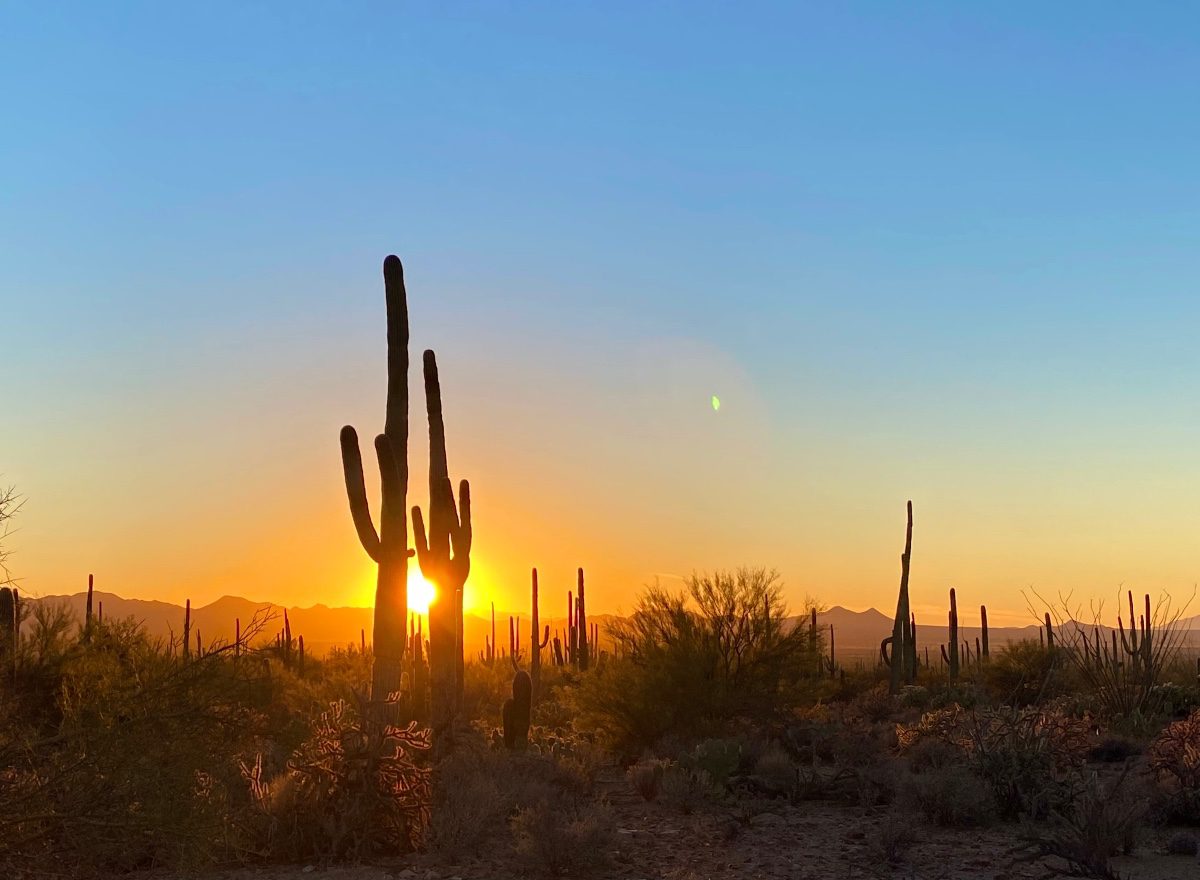Discovering the Grand Canyon State
Everyone should strive to see the Grand Canyon at least once in their lifetime.
An exclusive member of the Seven Natural Wonders of the World, the bucket-list-worthy behemoth is every bit as mighty in person as you might imagine.
While the majestic canyon is the only reason anyone should need to start planning their Arizona adventure, there are plenty of other reasons to prioritize a trip to the Grand Canyon State.
Arizona is jam-packed with recreational opportunities, natural beauty, and culture. It’s a destination ripe for soaking up history, marveling at biological diversity, and indulging in a unique culinary scene.
Before your travel calendar is full, consider these five reasons (and a few bonus ones) to start planning your visit to Arizona.
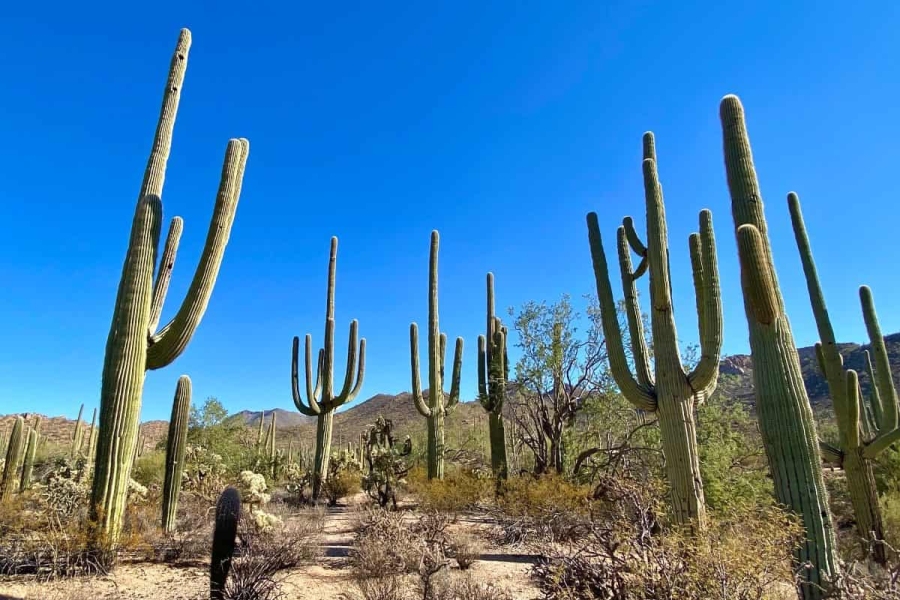
Reason #1 The Cacti
What’s not to love about cacti?
They’re weather resilient, produce gorgeous flowers, and possess incredible water storage capabilities. Even their needles and spikes are fascinating.
Collectively, cacti are an endearing symbol of Arizona and can be found virtually everywhere throughout the state.
Arizona cacti come in all colors, shapes, and sizes, from teddy bear chollas to violet prickly pears to golden hedgehogs and giant saguaros.
Tucson is home to the saguaro cactus, the largest cactus species in the U.S., and Saguaro National Park, which flanks the city on each side, is the best place to see them.
The Rincon Mountain District, located on Tucson’s eastern edge, is the more expansive district and features dozens of hiking trails. The western Tucson Mountain District is more family-friendly and has a far more dense saguaro population.
I recommend visiting the Tucson Mountain district if you only have enough time to see one side of the park. The multitude of saguaros is too spectacular to miss.
Take the 6-mile Bajada Loop dirt road, which is well-maintained, and you’ll encounter endless opportunities to pull over and snap photos. The drive gives the feeling that you’re in the heart of the wilderness, even though the city of Tucson is just a few miles away.
The short Valley View Overlook Trail is an easy way to experience the density and variety of cacti in the park, or a challenging trek up to Wasson Peak will grant breathtaking vistas where you can see cacti by the thousands.
Just outside the park, the Arizona-Sonoran Desert Museum showcases a bounty of cactus and other plant species that live across the state. The gardens are gorgeous, the exhibits are educational, and there is plenty of wildlife to observe, including over a dozen types of snakes!
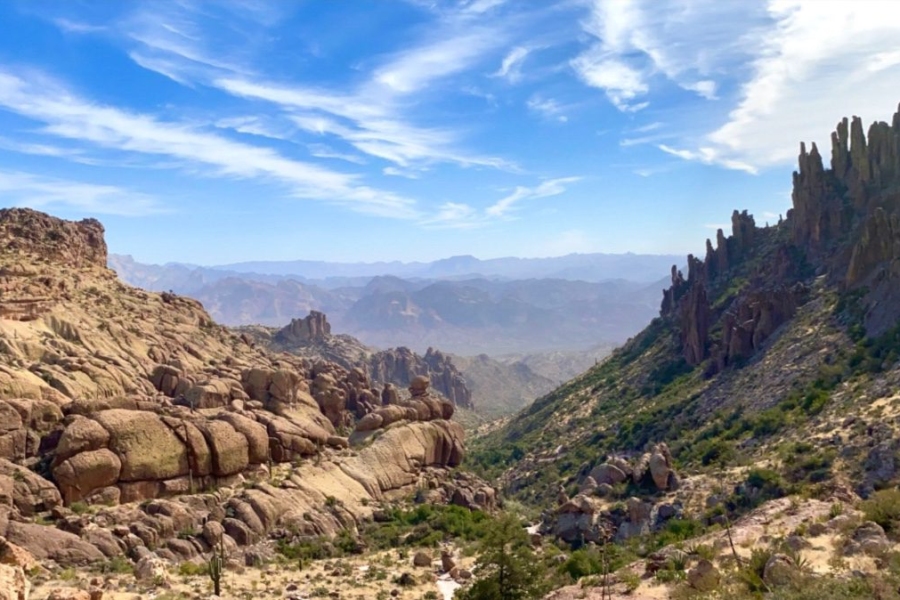
Reason #2: The Mountains
Before living in Arizona, I had no clue how many mountains the state had.
When someone told me there are over 200 mountain ranges in the state, I had to do some serious fact-checking.
But it’s true!
From the San Francisco Mountains near Flagstaff to the Superstition Mountains east of Phoenix to the White Mountains near the Mexico border, you’ll find stunning mountain ranges scattered across the state.
Standing at 12,637 feet, the San Francisco Mountains’ Humphreys Peak is the tallest mountain in the state and one of the most prominent mountains in the southwest.
Take the 10.7-mile roundtrip hike to the top on a clear day, and you’ll have a bird’s eye view of the Grand Canyon as your reward!
For an easier way to enjoy the mountain and its surrounding peaks, take the gorgeous 44-mile “Around the Peaks Loop.”
If you’re spending time near Phoenix, a trip east to the Superstition Mountains is a must-do. The range, defined by its prominent rock walls, jagged peaks, and carved-out canyons, has an ancient history of volcanic activity and a more recent history of rumored hidden gold.
The 6-mile Peralta Canyon Trail to Robber’s Roost is a fantastic introduction to the wilderness, with plenty of rock features, cacti, and wide-open vistas, including the distinct Weavers Needle rock column.
Just outside Tucson, Mount Lemmon is an outdoor lovers’ playground with ample hiking opportunities, picnic areas, and camping.
The Catalina Highway, which scales the mountain, is a breathtaking drive that offers several pull-off opportunities along its route. A dense population of saguaros near the beginning gives way to a forest filled with firs, pines, and aspens near the top.
Windy Point Overlook, located more than halfway up the mountain, gives adventurers a dramatic view of the winding roads they’ve just traversed.
Time things right, and you can take advantage of the lookout’s perfect sunset view!

Reason #3: Red Rocks of Sedona
Of all the driving I’ve done throughout the U.S., a few scenic stretches stand out the most.
The drive up any of Colorado’s highest mountain passes, such as Cottonwood Pass, is hard to beat. The zig-zagging Pacific Coast Highway is up there as well.
Another stretch of road that I wasn’t expecting to have quite the same impact as those epic drives was Highway 89A, which connects Flagstaff and Sedona.
When I say this drive gave me goosebumps, that’s not an exaggeration.
From Flagstaff, an already incredibly scenic drive through the Coconino National Forest turns even more breathtaking as you start the descent into Oak Creek Canyon, and the red rocks of Sedona reveal themselves for the first time.
Much like Bryce Canyon National Park, Sedona feels like something out of a fantasy.
So many towering crimson rock formations that burn deep shades of orange and red under the Arizona sun.
During my time in Arizona, I probably visited Sedona six or seven times, and each visit left me thinking about how lucky I was to live within an hour of this unique setting.
Sedona has a long list of spectacular hiking options, so there’s always a new vantage point to take in the extraordinary landscape.
The hike up Cathedral Rock is a great starting point for exploring Sedona’s beauty. The short climb requires a bit of scrambling, but the payoff at the top is one of Sedona’s very best views.
The 4-mile roundtrip hike to Devil’s Bridge and back is a perfect follow-up activity with the chance for an iconic photo on the bridge.
Or, those looking for a more challenging alternative may want to consider the Bear Mountain Trail, which rewards hikers with 360-degree views from one of Sedona’s highest points.
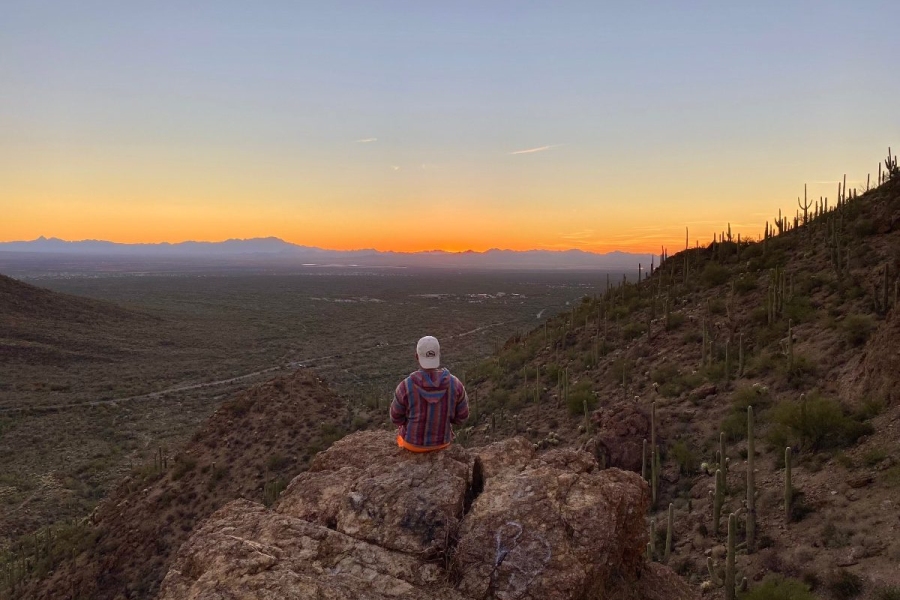
Reason #4: The Sunsets
Few things in life are better than a quality sunset.
While there’s no doubt they can be mesmerizing from any location (yes, even Kansas!), Arizona’s sunsets are on a whole other level, and there’s scientific reasons why that’s the case.
Arizona’s mostly-clear skies and clean, dry air keep the sun’s color particles from scattering. The low horizon of the desert allows the atmosphere to filter out more of the purples and blues, leaving deeper shades of red and orange to the naked eye.
Science lesson aside, the phenomenon is worth seeing for yourself, and there’s no shortage of settings that add an extra level of pizzazz to the Arizona evening light show.
As I mentioned earlier, sunset views don’t get much better than Windy Point Vista on the way up Mount Lemmon. My wife and I spent our final night as Arizona dwellers taking in a sunset here, and it was the perfect way to wrap up our time in the Grand Canyon State.
On the western side of Tucson near Saguaro National Park, Gates Pass presents a stunning sunset vista atop a mountain pass that looks down onto thousands of saguaros.
In the Phoenix area, you can never go wrong with a sunset hike up Camelback Mountain, but my favorite sunset spot is Dobbins Lookout, the highest point in South Mountain Park.
The 2,330-foot vista is accessible by trail or road, and the opportunity to observe the fiery red glow of the Phoenix Valley is well worth the journey up.
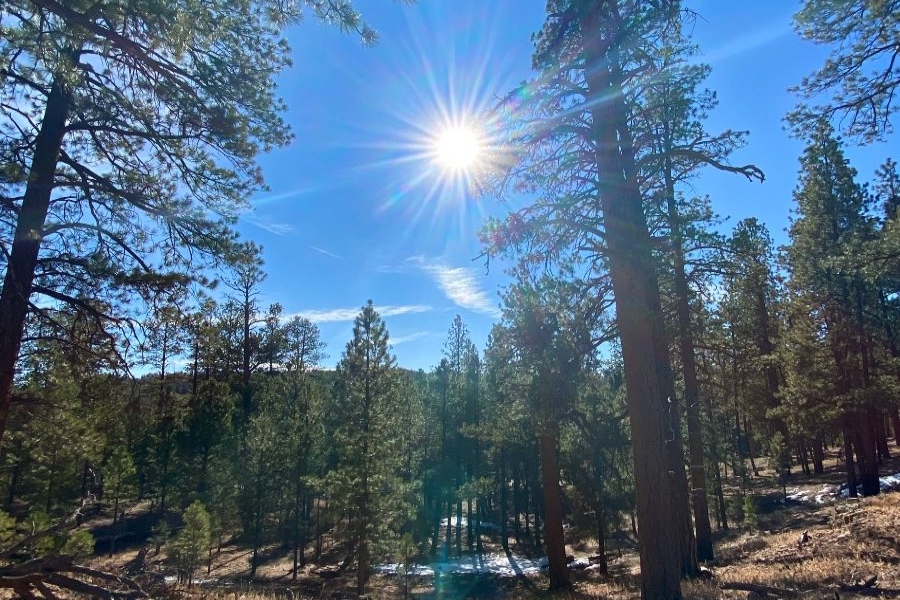
Reason #5: Four Seasons
Skiing in Arizona.
A crazy concept, right?
Before living in the Grand Canyon State, I had no idea it even snowed there!
Not only do many of Arizona’s mountains receive moderate snowfall during the winter, but the most popular ski resorts routinely accumulate over 200 inches of snow annually.
While snow at lower elevations isn’t a regular occurrence, my wife and I still experienced at least two non-mountain snows, including the day we moved into our place in Tucson. We were shocked!
So while air conditioning may be a life-or-death necessity from May to September, most of the state still gets a long break from blazing temperatures. And even during the summer, there are escape routes to beat the heat.
Flagstaff’s summer highs often fall short of eighty degrees, and even in Tucson, a drive up Mount Lemmon will give you a 20-30 degree cool-off.
And when Arizona’s summer commences, the crisp fall air begins to roll in, especially in the mountains.
Head to Flagstaff and the San Francisco Mountains, and you’ll find yourself surrounded by thousands, if not millions, of golden aspens.
Take scenic Highway 89A down to Sedona afterward, and you’ll experience the vibrant colors of Oak Creek Canyon.
On the drive there, you’ll also pass the West Fork of Oak Creek Trail, a highly recommended autumn route that displays a full palette of colors throughout the winding canyon.
Bonus Reasons to Visit Arizona
Sonoran-style Mexican food including Sonoran hot dogs and chimichangas
- Resort-style pools- the Phoenician and Hyatt Regency Scottsdale are two of the best
- Old mining towns like Bisbee, Tombstone, and Jerome
- Southwestern architecture including Pueblo-style (adobe) and Spanish mission homes
- Slot canyons like Upper and Lower Antelope Canyon and Waterhole Canyon
- Hoover Dam- one of the greatest engineering wonders of the modern world
- Recreational lakes such as Lake Powell, Lake Mead, and Lake Havasu (where the old London Bridge is located)
- Horseshoe Bend- a stunning nature setting and iconic photo

